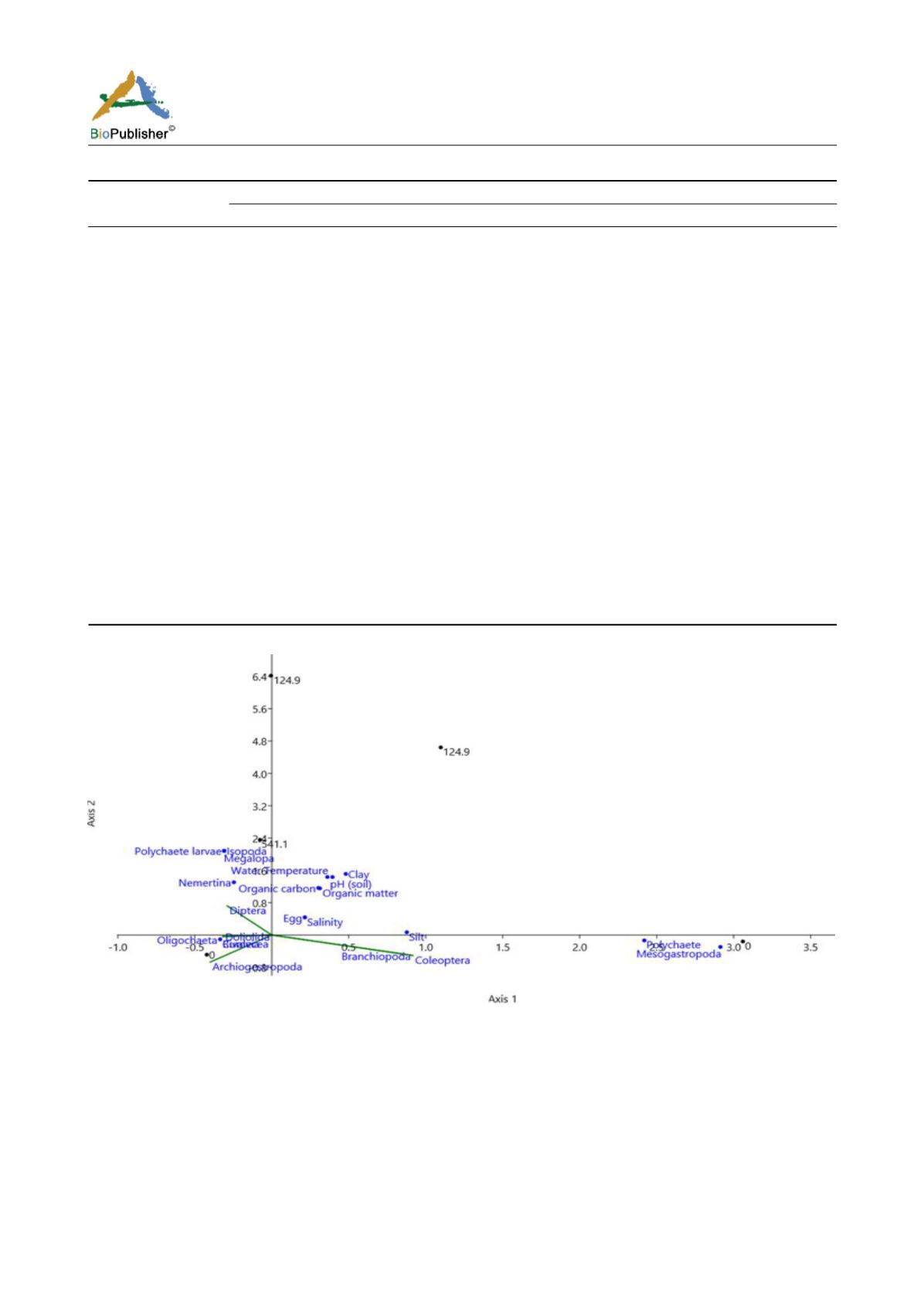
International Journal of Marine Science, 2017, Vol.7, No.12, 102-113
107
Table 4 Major taxa of macrobenthos (indivs /m
2
) occurred during monsoon (M) and post-monsoon (PM)
Major taxa (Indivs/m
2
) Sandwip
Hatiya
Bhola
Barisal
Chandpur
M PM M PM M PM M PM M PM
Acanthocephala
-
-
-
333.0 -
-
-
-
-
-
Amphipoda
124.9 41.6
124.9 4786.7 541.1 -
-
-
-
41.6
Archaeogastropoda
-
-
-
124.9 41.6
749.2 41.6 -
333.0 -
Bivalvia
-
83.2
-
291.4 -
-
-
291.4
-
1082.2
Branchiopoda
-
-
-
-
-
-
41.6 -
-
-
Coleoptera
-
-
-
-
-
-
41.6 -
-
83.2
Cumacea
-
-
-
-
83.2
333.0 -
-
-
-
Diptera
-
-
-
-
-
-
-
124.9
-
208.1
Doliolida
-
208.1 -
83.2
83.2
-
-
-
-
-
Egg
41.6 -
-
-
-
-
-
-
-
-
Isopoda
-
-
-
-
-
-
-
41.6
-
-
Megalopa
-
-
-
-
-
-
-
-
-
41.6
Mesogastropoda
-
-
-
-
-
-
-
166.5
-
-
Nemertea
83.2 4786.7 41.6 1623.3 124.9 -
-
333.0
124.9 7200.8
Oligochaeta
-
-
41.6 -
374.6 -
-
24974.0 7159.2 8949.0
Polychaeta
83.2 333.0
499.5 41.6
166.5 832.5 1248.7 41.6
7783.6
Polychaeta larvae
582.7
Total
333.0 5452.7 208.1 7741.9 1290.3 1248.7 957.3 27180.0 7658.7 25972.9
Note: M= Monsoon; PM= Post-monsoon; - = absent
Figure 3 Redundancy analysis (RDA) triplot displaying the ecological relationship between physico-chemical parameters and
benthos community during monsoon season
During the monsoon season, when a low-salinity environment prevailed in majority portion of the estuary, most of
the benthos showed low positive relation with salinity. Moreover, Amphipod, Isopoda, Diptera, Megalopa,
Nemertean, Polychaetes larvae showed close affinity to water temperature and organic carbon. Again Branchiopod
and Coleopteran showed close affinity to silt soil. Archiogestropoda, Cumacea, Doliolida and Oligochaeta
exhibited no affinity to clay and soil pH and organic matter (Figure 3) Moreover, Polychaetes and
Mesogastropoda showed that they were not influenced by physico-chemical factors during post-monsoon
(Figure 3).


